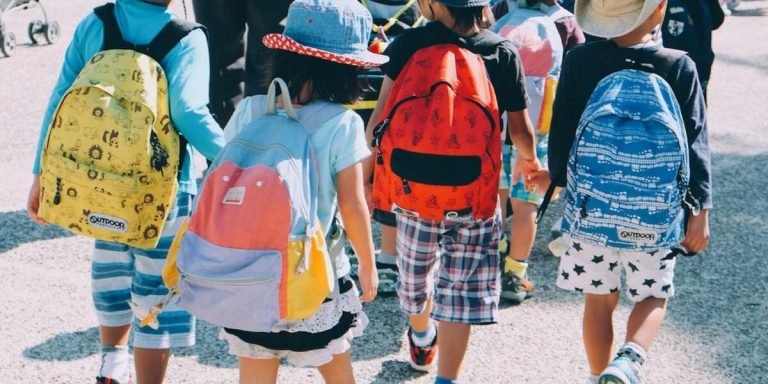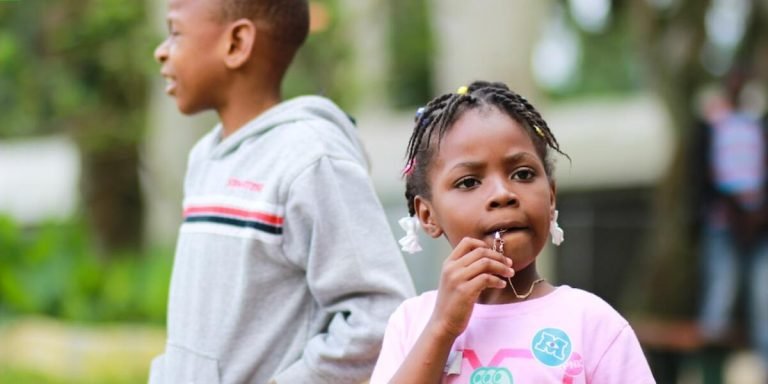Special Education Teacher: A Glimpse into Their Remarkable Journey in Shaping Young Minds
The role of a special education teacher is both challenging and inspiring. They not only impart knowledge but also serve as the guide to help children with unique learning needs navigate their educational journey. The objective remains constant – to foster an environment that encourages every child to reach their fullest potential, regardless of any learning disabilities or differences they may have.
This pivotal profession often goes unseen in its depth by many; therefore, it becomes essential for parents and educators alike understand this better. This can be achieved by providing special education resources and support necessary for these teachers. Here we delve into the remarkable journey of a special education teacher—exploring what they do, how they influence young minds positively, how specific resources propel them forward in shaping students’ lives effectively.
Did you know?
Despite the challenges they face, special education teachers continue to have one of the highest job satisfaction rates. In a recent survey, 88% reported feeling happy and finding their jobs rewarding as it allows them to make significant differences in lives of children who need it most.
Understanding the Role of a Special Education Teacher
In the complex landscape of education, a special education teacher holds an integral role. These professionals are not merely educators; they serve as advocates and connoisseurs in diversifying learning techniques to accommodate students with unique needs. They take on the challenge of creating inclusive classrooms where everyone can reach his or her highest potential irrespective of their abilities.
The focal point around which the world of a special education teacher revolves is Technology Integration. In 2023, more than ever before, technology has cast its net far and wide into every aspect of life including childhood education. It’s nearly impossible to talk about modern-day teaching methodologies without considering how technological tools have reshaped them fundamentally.
Training aids like interactive whiteboards, assistive listening devices or even customized mobile applications play pivotal roles in delivering personalized educational interventions for these children. This enhances student engagement while providing much-needed support for teachers who often grapple with classroom diversity concerning learning styles and capabilities.
However beneficial it might be though, integrating technology in Special Education comes with its challenges too – from ensuring equal access across different demographics to finding resources that align perfectly with individual IEP (Individualized Education Program) goals set by each child’s team within school districts.
Be assured knowing this; your child is under exceptional care when paired up against top-tier talents equipped with contemporary “Special Education Resources”. Their mission extends beyond imparting knowledge – it involves enabling students’ independence through self-learning using groundbreaking ed-tech solutions coupled alongside continuous support throughout this journey towards academic success.
Qualifications and Training Necessary for Special Education Teachers
Being a special education teacher is both an immensely rewarding and challenging career. Professionals in this field bear the responsibility of shaping young minds that require specialized approaches to learning, ensuring they can access their full educational potential.
Every special education teacher starts their journey with acquiring specific qualifications aimed at helping them manage different types of cognitive disabilities effectively. A common starting point involves earning a bachelor’s degree in Special Education or related fields such as Child Psychology or Learning Disabilities Studies. Some states also demand prospective teachers to specialize further by completing Masters programs specifically tailored towards handling particular disability cases.
Training varies depending on jurisdiction; however, it largely shares core elements necessary for becoming successful in addressing diverse student needs. Trainee teachers typically gain practical experience through teaching internships where they work directly under the mentorship of seasoned professionals within actual classroom environments.
In 2023, technology integration has become an indispensable part of training for aspirant special education teachers too. They are taught how to leverage assistive technologies (AT) including reading software and speech recognition programs strategically incorporated into lesson plans aiming at facilitating inclusive learning sessions catering every child’s unique requirements.
Day-to-Day Responsibilities in a Special Ed Classroom
A special education teacher’s responsibility extends far beyond regular teaching duties, primarily dealing with students who have a wide range of learning, mental, emotional and physical disabilities. They adopt different teaching methods to meet the individual needs of each student.
Technology integration plays an enormous role in the field of special education by facilitating tailor-made educational experiences. Students experience phenomenal changes in their day-to-day schedules due to this integration.
1. **Individualized Education Plans (IEP):** Special educators draft personalized lesson plans for helping each child reach his or her potential at comfortable paces.
2. **Special Learning Tools:** The use of adaptive devices such as text-readers and talking calculators has become commonplace in a technologically advanced special ed classroom now more than ever before.
3. **Engaging Students**: By using interactive games powered by augmented reality & virtual reality technologies, they keep children engaged while discovering new avenues for better understanding.
4. **Facilitating Collaboration:** Teachers collaborate online on forum discussions with fellow teachers sharing resources that work best according to specific disability types making pedagogical approaches much more efficient.
5.Given how quickly technology evolves,the professional development doesn’t stop after certification: it is constant updating skillset keeping pace with advancements like assistive tech tools thereby offering seamless support to all learners irrespective disabilities severity levels.
Evaluating Effective Teaching Strategies in Special Education
In the realm of special education, identifying effective teaching strategies is not just a matter of academic success; it’s about empowering students to surmount their challenges and soar above potential limitations. This has become easier in recent years as technology integration in education becomes more commonplace.
The role of a special education teacher is multi-faceted. They’re educators, counselors, advocates – all roles that demand specialized knowledge and skills. With 2023 bringing an array of innovative tools for e-learning at our fingertips, integrating technology into these roles can enhance instructions significantly while catering to each student’s unique needs.
Technology plays a pivotal part when formulating inclusive learning environments for diverse learners. It offers precise assessment tools that help pinpoint individual strengths and areas requiring improvement with remarkable accuracy compared to traditional methods.
Moreover, the inclusion complementing resources like interactive gamified lessons or virtual reality experiences open new avenues for understanding complex concepts through practical engagement – making abstract theories tangible realities for eager young minds.
Evaluating such techniques’ efficacy helps ensure we optimize resource utilization while providing enriching educational experiences tailored specifically around every child’s requirements.
With advancement comes responsibility though! Technology necessitates appropriate monitoring mechanisms to prevent misuse and maintain quality control over content accessible by children within classrooms settings under supervision from qualified teachers.
Incorporating Individualized Education Plans (IEPs)
In the era of technology and personalized learning, a special education teacher must skillfully weave individualized education plans (IEPs) into their teaching strategy. This integration empowers students with unique needs to reach their full potential.
Firstly, understanding an IEP is paramount. It’s a legally binding document that outlines specific goals for each student based on his or her unique strengths and weaknesses. These blueprints are developed by team effort – parents, teachers, school psychologists all collaborate together to create this plan.
A successful special education teacher understands these stipulations inside out and utilizes them daily in classroom proceedings; it’s not merely shelved decoration but rather actionable guidelines towards inclusive educational reform.
1. Assisted Technology Devices – Digital tools like communication boards and speech synthesisers bridge gaps between learners’ abilities & lesson objectives.
Utilizing Assistive Technologies for Enhanced Learning
The role of a special education teacher in 2023 goes beyond classroom teaching. They are now integral facilitators of inclusive technology, helping each student to reach their unique educational goals.
Assistive technologies play an essential part in this mission. From specially programmed laptops and tablets to voice recognition software and adaptive learning applications, they can help students with different abilities grasp complex concepts more easily.
One example is interactive whiteboards that have been shown to benefit children with visual impairments or physical disabilities. This tool allows the child to visualize lessons graphically on large screens boosting their engagement while fostering independence during class participation.
Next, there’s text-to-speech (TTS) technology which serves as a vital support for learners who may struggle with reading due to dyslexia or other learning disorders. By converting printed text into spoken words through computer-generated voices, TTS aids comprehension significantly by allowing such pupils interactively engage texts at their own pace without overreliance on teachers or peers.
Navigating Resources and Support Networks for Special Educators
In the realm of special education, teachers have a unique set of challenges and opportunities. Ensuring that every student receives an equitable and effective learning experience is at the core of their mission. This task becomes significantly more manageable with the aid of pertinent resources and robust support networks designed specifically for these educators.
Technology integration in education has revolutionized how special education teachers operate, opening doors to numerous avenues that move beyond traditional teaching methods. In 2023, digital tools are providing new platforms for knowledge sharing among educators as well as enabling differentiated instruction tailored to each student’s needs.
However, navigating through this vast array of resources can be overwhelming without proper guidance or community support. That’s where online communities come into play by linking teachers globally – spurring collaboration around creative lesson plans or technology deployment strategies related specifically to special needs environments.
These support networks also act as invaluable lifelines when facing daunting challenges present in educational landscapes while enhancing professional development focused on technology-led instructional approaches.
Professional Development Opportunities for Continuous Learning
With the digital transformation that has swept across various sectors, it’s irrefutable; education isn’t left behind. This is especially notable within special education where technology integration can considerably enhance learning experiences for children with unique needs.
One of the most significant ways a special education teacher can harness this change effectively is through continuous professional development opportunities. They not only improve their teaching skills but also foster an understanding and knowledge on how to integrate cutting-edge technology into their classes successfully.
Online courses offer one such opportunity in 2023. Many online platforms provide targeted content specific to modern educational trends like adaptive learning software or virtual reality implementation—tools integral for tech-integrated curriculums in special ed classrooms.
Networking events cannot be understated either; they present golden chances to meet other professionals navigating similar challenges as a special education teacher incorporating new technologies into curriculum design or everyday school activities.
Mentorship programs still ring true today too! Partnering with more seasoned teachers who have already walked down the path you’re treading now opens up insights on potential pitfalls while integrating technology efficiently contributing toward best outcomes possible.
Building Collaborative Relationships with Parents and Professionals
As a special education teacher in 2023, it is crucial to establish collaborative relationships with both parents and professionals for effective integration of technology in the learning process. Here are some sterling strategies.
1. **Open Communication:** Open, ongoing communication helps build strong relationships between educators and families. This can comprise regular updates about a child’s progress using email or virtual classrooms apps serving as channels for real-time feedback on technologically boosted assignments.
2. **Professional Networking:** Building your network within the field sharpens your skills while promoting supportive interactions among like-minded teachers. Joining online communities dedicated to Special Education Resources provides an excellent avenue where you could share insights on how best to integrate tech-tools into educational practices effectively.
3. **Parents-Teachers Meetings Online:** Virtual meetings offer remarkable resource-saving potential that could be channeled towards building better equipped innovative classrooms instead; time-efficient yet personal engagements underscore commitment from both ends ensuring sustained collaboration over student’s welfare.
4.Starting Webinars: An active way of fostering openness includes conducting webinars focusing on showcasing novel technological tools being integrated into curriculums – this boosts parent understanding and participation alike aiding their acceptance which trickles down positively affecting students’ outlooks too.
Conclusion
In essence, the journey of a special education teacher is filled with unique triumphs and tribulations. They utilize their immeasurable patience, versatile skills, ceaseless dedication for continually shaping young minds to excel despite any odds they may face. With each passing school day in the life of a special education teacher comes new challenges but greater rewards as well – indeed a remarkable testament to their incredible influence.
If you found this peek into the world of a special education teacher enlightening and wish to delve deeper into similar topics or find support as an educator or parent navigating childhood education, we invite you to explore our website further. It’s packed full with insightful content designed specifically for those dedicated individuals who believe that every child has potential waiting just be unlocked.







